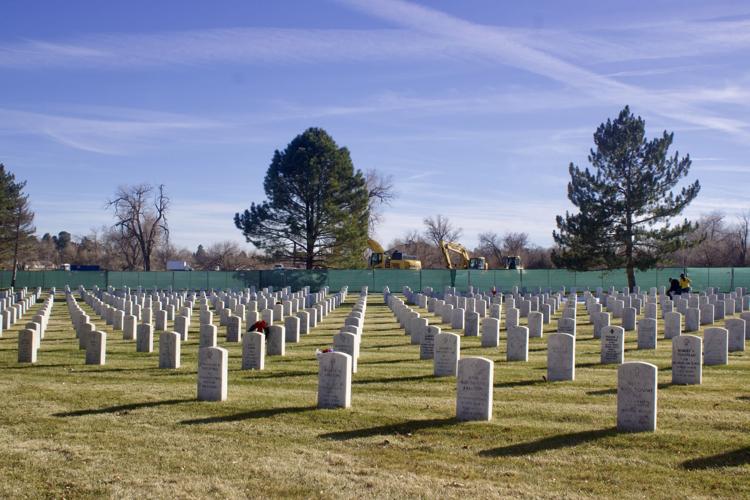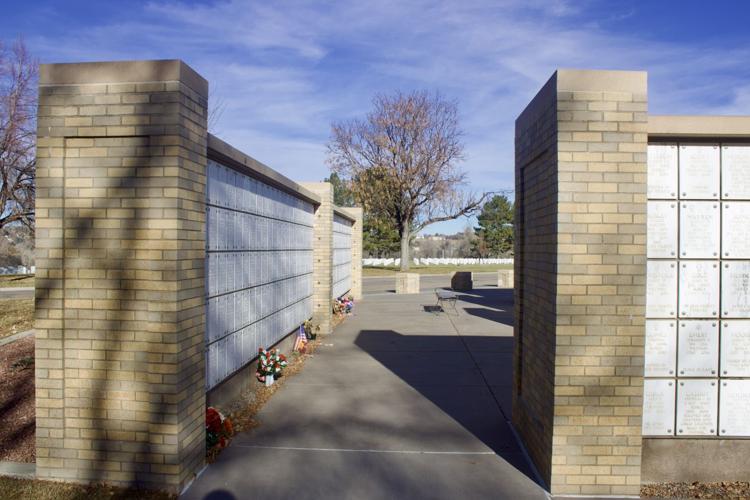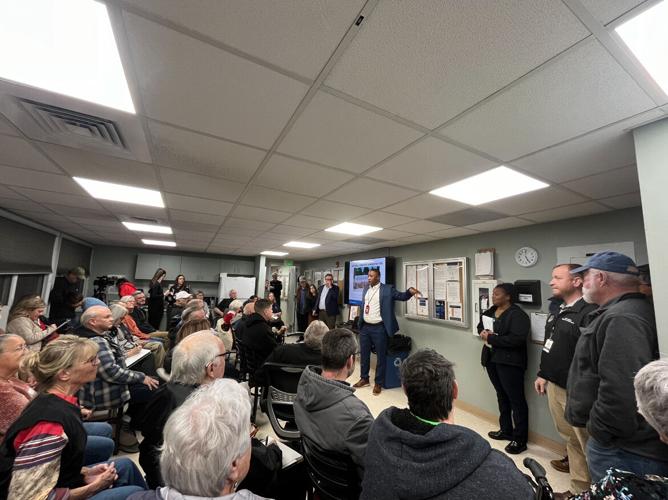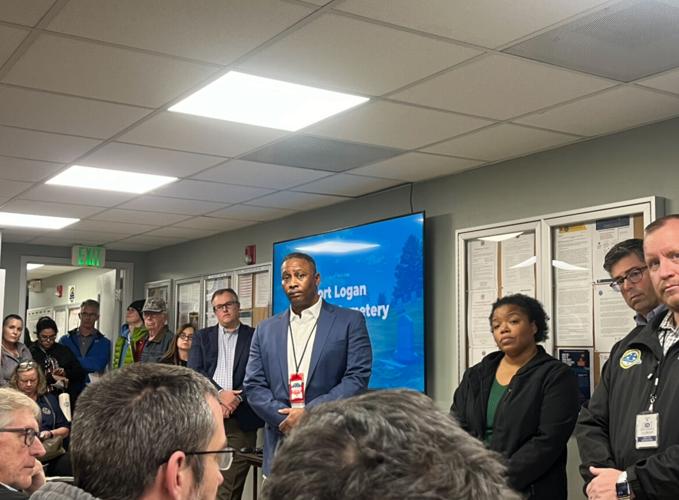Fort Logan National Cemetery neighbors balk at building columbarium walls, say VA didn’t provide notice

Construction vehicles on the south end of Ft. Logan National Cemetery laying the groundwork for 10,000 new columbarium's to hold the ashes of veterans until at least 2065. The construction fencing separates the 214-acre cemetery and a nearby neighborhood on Tuesday, Dec. 3, in Denver, Colorado.
Noah Festenstein/Denver Gazette
Nearby residents are pushing back at building columbarium walls right behind their homes at Fort Logan National Cemetery in Denver, saying the U.S. Department of Veterans Affairs didn’t tell them about the change and many learned about it only after the work has already begun.
The construction of 10,000 columbarium compartments at the cemetery’s southern end is underway. The project, which also includes more underground burial options, aims to provide enough options for military veterans until at least 2065 and the goal is to get it ready within two years, according to Tony Thomas, the cemetery’s director.
A columbarium is a structure that is used to store and display cremated remains. Typically, ashes are kept inside niche’s, or compartments, inside an above-ground wall or a building where loved ones can visit. Today, Fort Logan National Cemetery, located southeast of Hampden Avenue and Sheridan Boulevard, has 22,000 columbarium compartments.
At a town hall meeting at the cemetery on Tuesday night, area residents urged the Veterans Affairs to halt construction and consider alternative spots in the cemetery.
“There seems to be confusion over what it is, and the entire expansion project, and what it could bring to veterans in Colorado,” Thomas told The Denver Gazette prior to the meeting.
To their surprise and bewilderment, Pinehurst Estates residents said many of them learned of the project only two weeks ago when heavy equipment showed up and started removing trees and digging trenches close behind homes. There are about 20 homes adjacent to the planned 40-foot long, 10-foot-high columbarium walls.
Residents emphasized they support building more burial options, noting some of them would somebody be buried at the cemetery and they have relatives buried there, but they lamented the project’s exact location, saying the columbarium walls would go up immediately near their homes.
Overseen by the U.S. Department of Veteran Affairs Office of Construction and Facilities Management, the project spans half a mile at the south end of the cemetery and includes a collection of 10-foot-tall walls to store cremated burials. Work began on the project in 2019, according to Thomas.
The residents said the columbarium walls would decrease property values and increase the potential for crime.
Notably, they said they felt blindsided and blamed Veterans Affairs officials, saying the department didn’t tell them about the project before beginning construction.
“Some of us are actual veterans, some of us are children of veterans, some of us are spouses of veterans — we consider ourselves absolutely part of the military family. We are proud to live here,” said Carol Andrew, a resident who has lived in the area for more than three decades and have relatives buried in the cemetery.
“We have a right to a notice,” she said.
In response to the complaints about the lack of the notice to the residents, Thomas said: “To maybe ease the tension of the residents who are nearby and who are worried about this and concerned with the timing, we’ve actually been developing this project for over three years.”
At the time, Thomas said public notices had gone out.
“They did the environmental assessment, contacted several associations in the area about the project and the expansion project,” Thomas said. “The project was awarded this year, which is when work finally started.”
The residents said they didn’t see any notice.
“This has been officially noticed, but it’s not going to be anything anyone is going to see,” Andrew said, referring to the public notice officially published in a Denver newspaper. Andrew said the VA sent official notices to state and local agencies and others — but not to the neighbors directly next to the cemetery.
She also said the project’s environmental assessment ignored the impacts on residential neighbors.
One part of that assessment said: “The surrounding area does not include residential areas.”
Charles Christensen, an engineer at Continental District of the U.S. Department of Veterans Affairs that is tasked on the Fort Logan project, told The Denver Gazette: “I definitely heard the feedback loud and clear with the citizens.”
“What I can do,” he said, “is take that feedback to the contracting officer. We can discuss what the options are and then get that feedback back to the citizens.”
“What we are trying to accomplish is to provide enough burial space for veterans. That’s our No. 1 mission, and this project is vital to keeping these doors open,” Christensen said.
Ruth Rowley-Manro is one of many whose spouse is buried in the cemetery. In fact, she said, her husband is buried just yards away from their home.
Due to new fencing blocking off the cemetery, she said the new construction will block her view and ability to conveniently visit her deceased husband, Wilford, in the cemetery.
“This should’ve been discussed so we would have a voice in all this,” Rowley-Manro said. “I wish they would move it.”
Tension was palpable during Tuesday’s meeting, which ended with an agreement between residents and cemetery officials the latter would bring their concerns to the VA. The officials didn’t promise making any changes.
Denver City Councilmember Kevin Flynn, who represents the district and attended Tuesday’s town hall meeting, said it is possible for this type of project to reconsider locations.
“I know change orders can happen,” the councilmember said at the meeting.
“Forty-five years of experience tells me this is a very hard ship to turn around. The federal government doesn’t have to listen to us, but that doesn’t mean that they can’t,” Flynn said. “This is a beautiful facility, I love having it here in the district.”
“It would be wonderful, if, for once, for the federal government, which doesn’t have to follow our zoning laws or ordinances,” Flynn said, “there was some process for reconsideration.”







